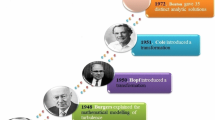Abstract
This paper deals with the numerical solution of an ionization wave propagation in air, described by a coupled set of convection-diffusion-reaction equations and a Poisson equation. The standard three-species and more complex eleven-species models with simple chemistry are formulated. The PDEs are solved by a finite volume method that is theoretically second order in space and time on an unstructured adaptive grid. The upwind scheme and the diamond scheme are used for the discretization of the convective and diffusive fluxes, respectively. The Poisson equation is also discretized by the diamond scheme. The results of both models are compared in details for a test case. The influence of physically pertinent boundary conditions at electrodes is also presented. Finally, we deal with numerical accuracy study of implicit scheme in two variants for simplified standard model. It allows us in the future to compute simultaneously and efficiently a process consisting of short time discharge propagation and long-term after-discharge phase or repetitively pulsed discharge.


















Similar content being viewed by others
References
Durante, M., Bonaventura, Z., Massot, M., Bourdon, A.: A numerical strategy to discretize and solve the poisson equation on dynamically adapted multiresolution grids for time-dependent streamer discharge simulations. J. Comput. Phys. 289, 129–148 (2015)
Kulikovsky, A.A.: Positive streamer between parallel plate electrodes in atmospheric pressure air. J. Phys. D: Appl. Phys. 30, 441–450 (1997)
Celestin, S.: Study of the dynamics of streamers in air at atmospheric pressure, aboratoire d’energétique moléculaire et Macroscopique Combustion (EM2c) du CNRS et de l’ECP (2008)
Celestin, S., Bonaventura, Z., Zeghondy, B., Bourdon, A., Segur, P: The use of the ghost fluid method for Poisson’s equation to simulate streamer propagation in point-to-plane and point-to-point geometries, J. Phys. D: Appl. Phys. 42 (2009)
Morrow, R., Lowke, J.J.: Streamer propagation in air. J. Phys. D: Appl. Phys. 30, 614–627 (1997)
Benkhaldoun, F., Fort, J., Hassouni, K., Karel, J.: Simulation of plannar ionization wave front propagation on an unstructured adaptive grid. J. Comput. Appl. Math. 236, 4623–4634 (2012)
Benkhaldoun, F., Fort, J., Hassouni, K., Karel, J., Trdlicka, D.: A numerical study of planar discharge motion. Appl. Comput. Mechanics 8, 25–34 (2014)
Benkhaldoun, F., Fort, J., Hassouni, K., Karel, J., Scarella, G., Trdlicka, D.: A Full 3-D dynamically adaptive unstructured grid finite-volume approach to simulate multiple branching in streamer propagation. IEEE Trans. Plasma Sci. 42(10), 2420–2421 (2014)
Ponomarev, A.A., Aleksandrov, N.L.: Monte Carlo simulation of electron detachment properties for \({o}_{2}^{-}\) ions in oxygen and oxygen:nitrogen mixtures. Plasma Sources Sci. Technol., 24 (2015)
Biagi-v7.1 database, www.lxcat.net, retrieved on October 2, 2018
Yousfi, M., et al.: Ion swarm data for electrical discharge modeling in air and flue gas mixtures. J. Appl. Phys. 94, 96–103 (2003)
Montijn, C., Hundsdorfer, W., Ebert, U.: An adaptive grid refinement strategy for the simulation of negative streamers. J. Comput. Phys. 219(2), 801–835 (2006)
Nikandrov, D., Arslanbekov, R., Kolobov, V.: Streamer simulations with dynamically adaptive cartesian mesh. IEEE Trans. Plasma Sci. 36(4), 932–933 (2008)
Karel, J.: Numerical Simulation of Streamer Propagation on Unstructured Dynamically Adapted Grids, PhD Thesis, CTU in Prague (2013)
Bressieres, D., Paillol, J., Bourdon, A., Segur, E., Marco, E.: A new one-dimensional moving mesh method applied to the simulation of streamer discharges. J. Phys. D. Appl. Phys. 40, 6559–6570 (2007)
Cernák, M., Odrobina, I.: Numerical simulation of streamer-cathode interaction. J. Appl. Phys. 78, 3635–3642 (1995)
Bourdon, A., Pasko, V.P., Liu, N.Y., Celestin, S., Ségur, P., Marode, E.: Efficient models for photoionization produced by non-thermal gas discharges in air based on radiative transfer and the Helmoltz equations. Plasma Sources Sci. Technol. 16(3), 656–678 (2007)
Funding
The work was supported by the European Regional Development Fund-Project “Center for Advanced Applied Science” (No. CZ.02.1.01/0.0/0.0/16_019/0000778), and by the Grant Agency of the Czech Technical University in Prague, grant no. SGS19/154/OHK2/3T/12. This research was supported by project LM2018097 funded by the Ministry of Education, Youth and Sports of the Czech Republic, through Zdeněk Bonaventura.
Author information
Authors and Affiliations
Corresponding author
Additional information
Communicated by: Pavel Solin
Publisher’s note
Springer Nature remains neutral with regard to jurisdictional claims in published maps and institutional affiliations.
Rights and permissions
About this article
Cite this article
Fořt, J., Karel, J., Trdlička, D. et al. Finite volume methods for numerical simulation of the discharge motion described by different physical models. Adv Comput Math 45, 2163–2189 (2019). https://doi.org/10.1007/s10444-019-09706-9
Received:
Accepted:
Published:
Issue Date:
DOI: https://doi.org/10.1007/s10444-019-09706-9




